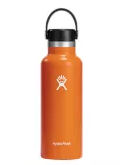It cannot be stressed too much how important your hiking outfit and equipment are. The mountaineer's equipment also depends on the difficulty of the route.
| |
Shoes
For longer walks we recommend a boot which covers the ankle. Leather should be waterproofed and a profiled rubber sole is very important. New boots should be used and "broken in" before you go on longer hikes.
Socks
Woollen socks tend to be the best. If wearing breeches the stockings should cover the knees.
Shirt/blouse
It is better to take two thin pullovers with you instead of one thicker one. Extra layers are more beneficial and pullovers should cover your hips.
Trousers
Breeches are preferable and the cut should be comfortable. You should take shorts as a second pair of trousers with you on a hot day.
 Anorak
Anorak
The material should be breathable, whilst still keeping the rain out.
Head gear
A large cape which also covers your rucksack is very handy. They must be light and easy to fold away. As sun protection, a foldable hat made of linen with a brim or a head scarf are ideal.
Gloves
Most functional are gloves made of wool.
Rucksack
Material - synthetics or strong canvas, with upholstery at the back. Large, upholstered carrying straps are important.
Sunglasses
60 - 80 % light absorption.
First aid kit
Plasters, tape, an adhesive, pain-killing tablets, insect repellent.
Provisions
Fruit, chocolate, dried fruit. On hot days and for longer tours, we recommend that you take drinks with you.
 |
 |
 |
 |



